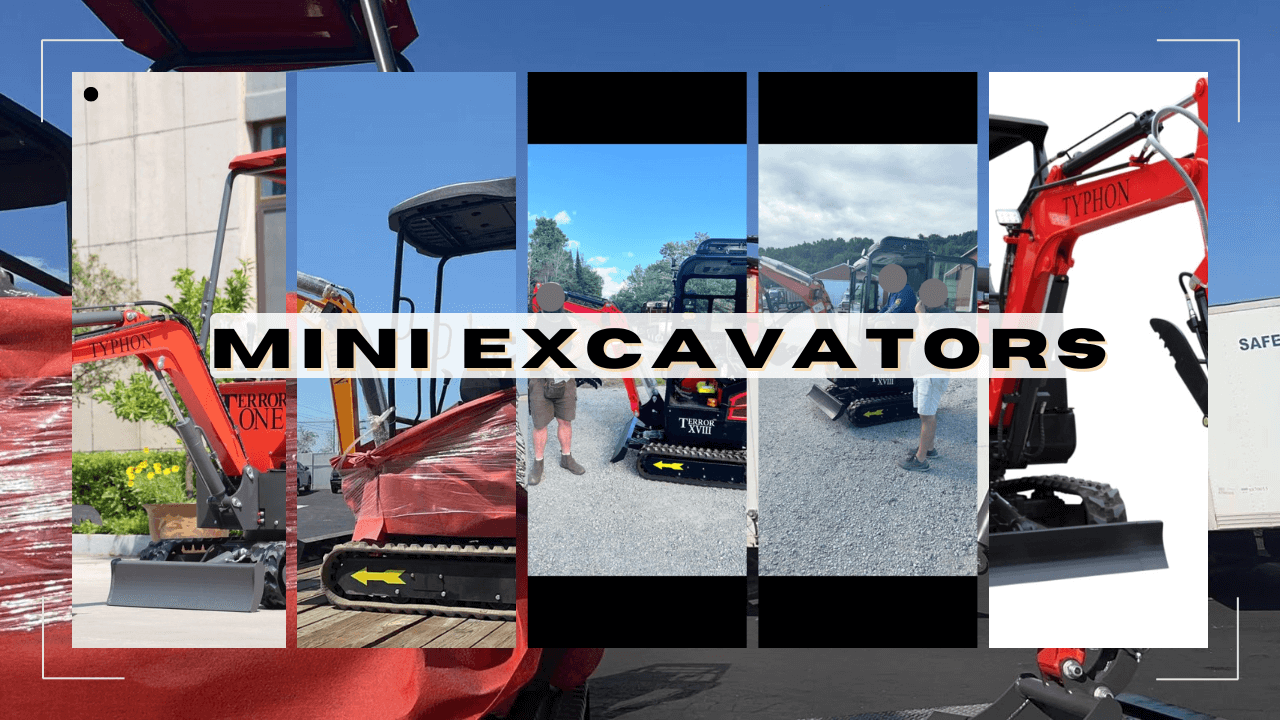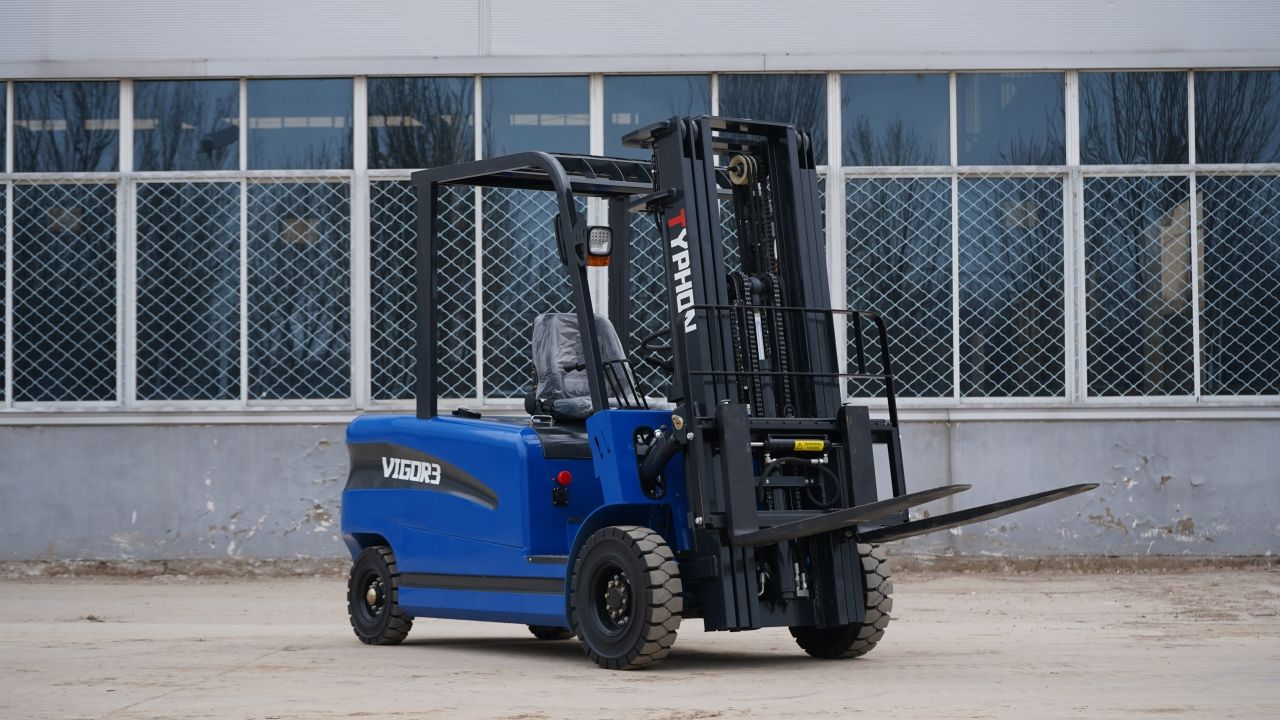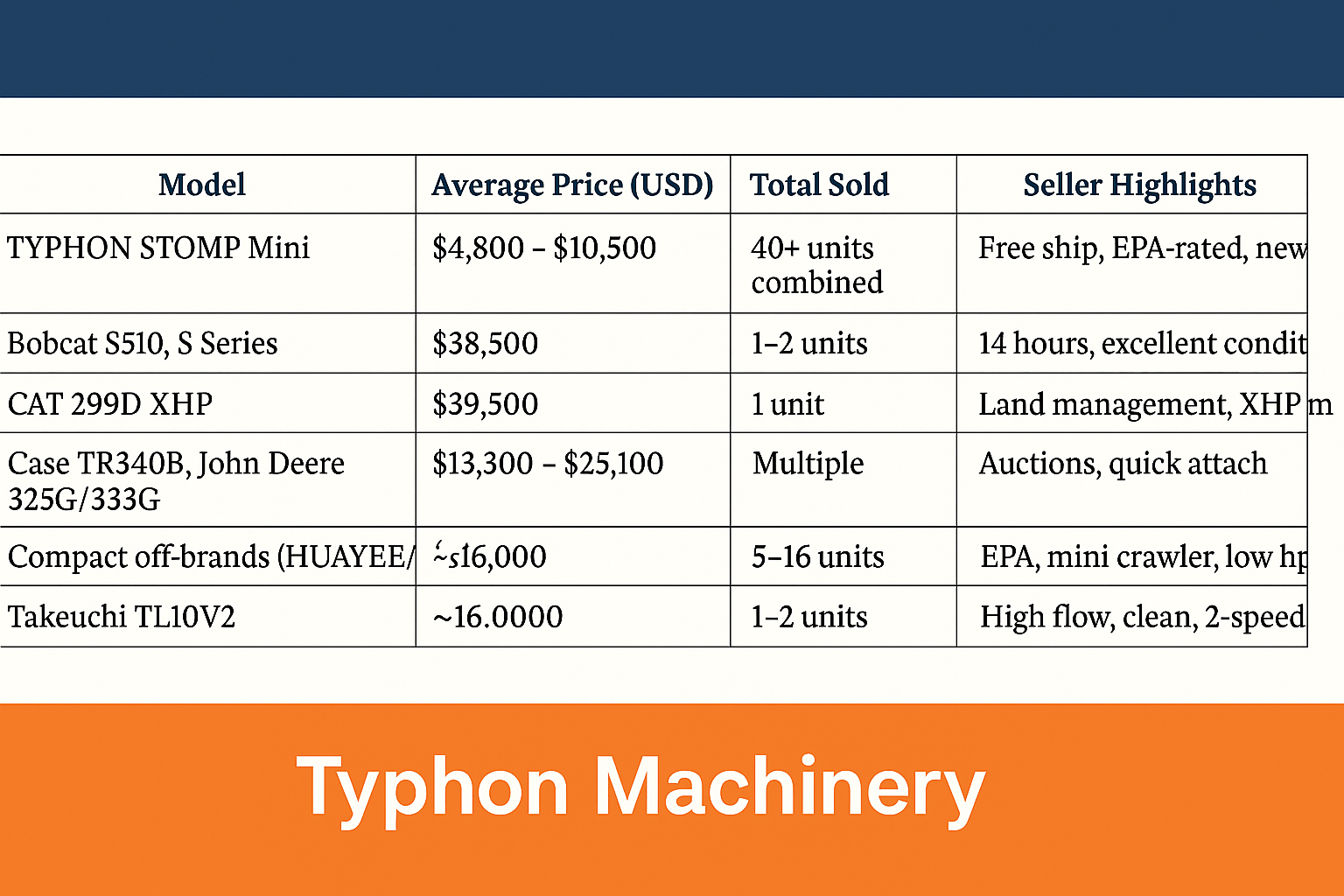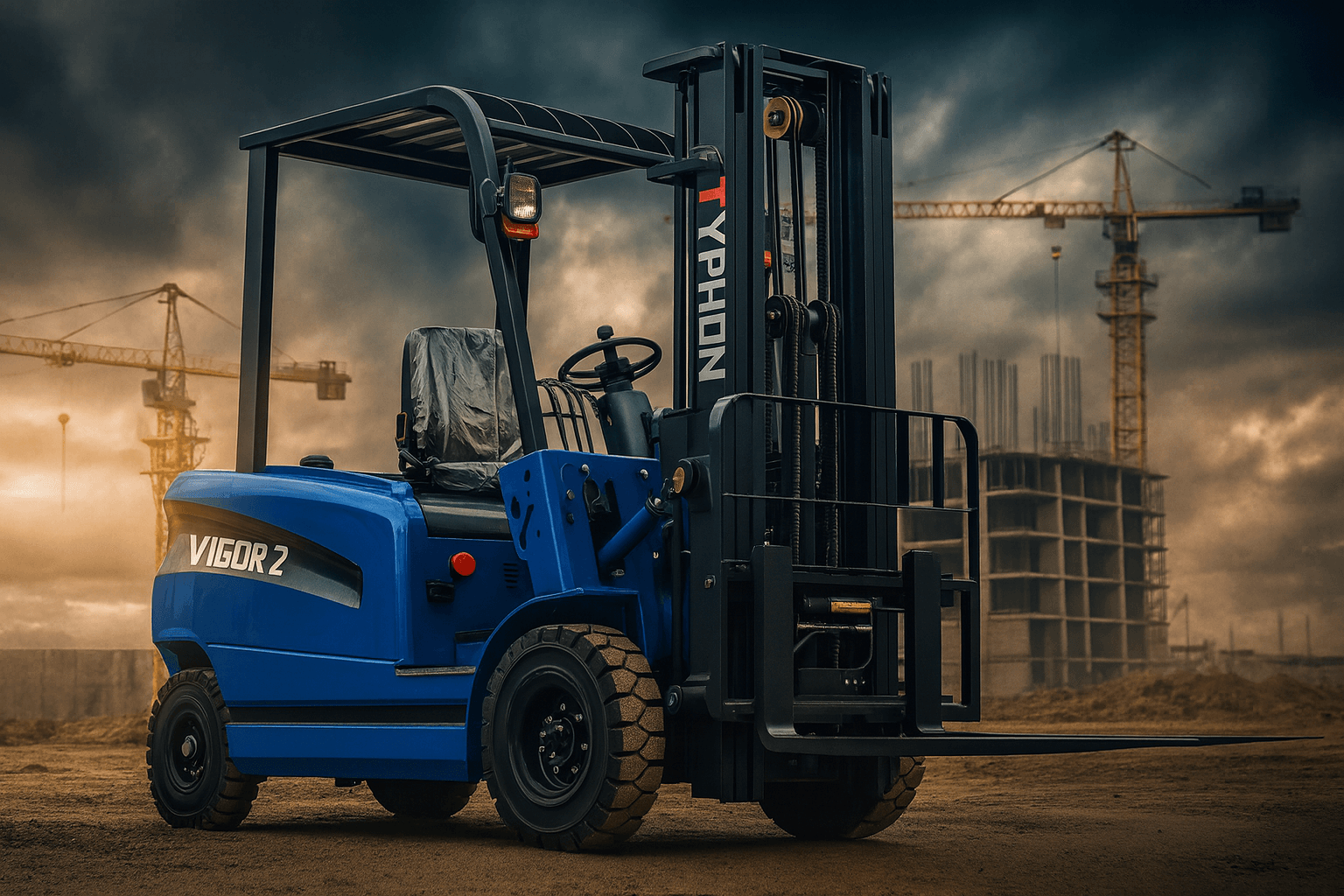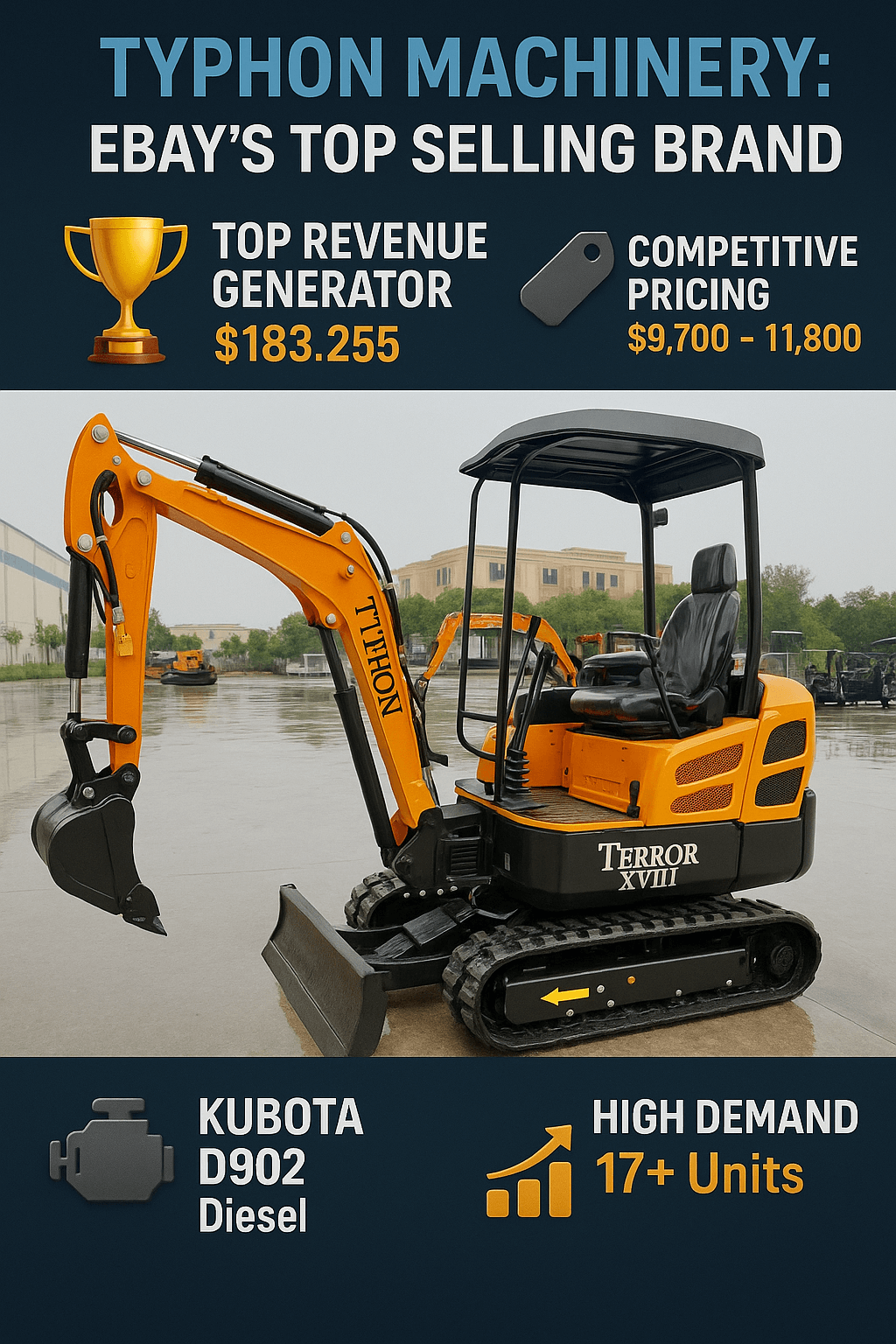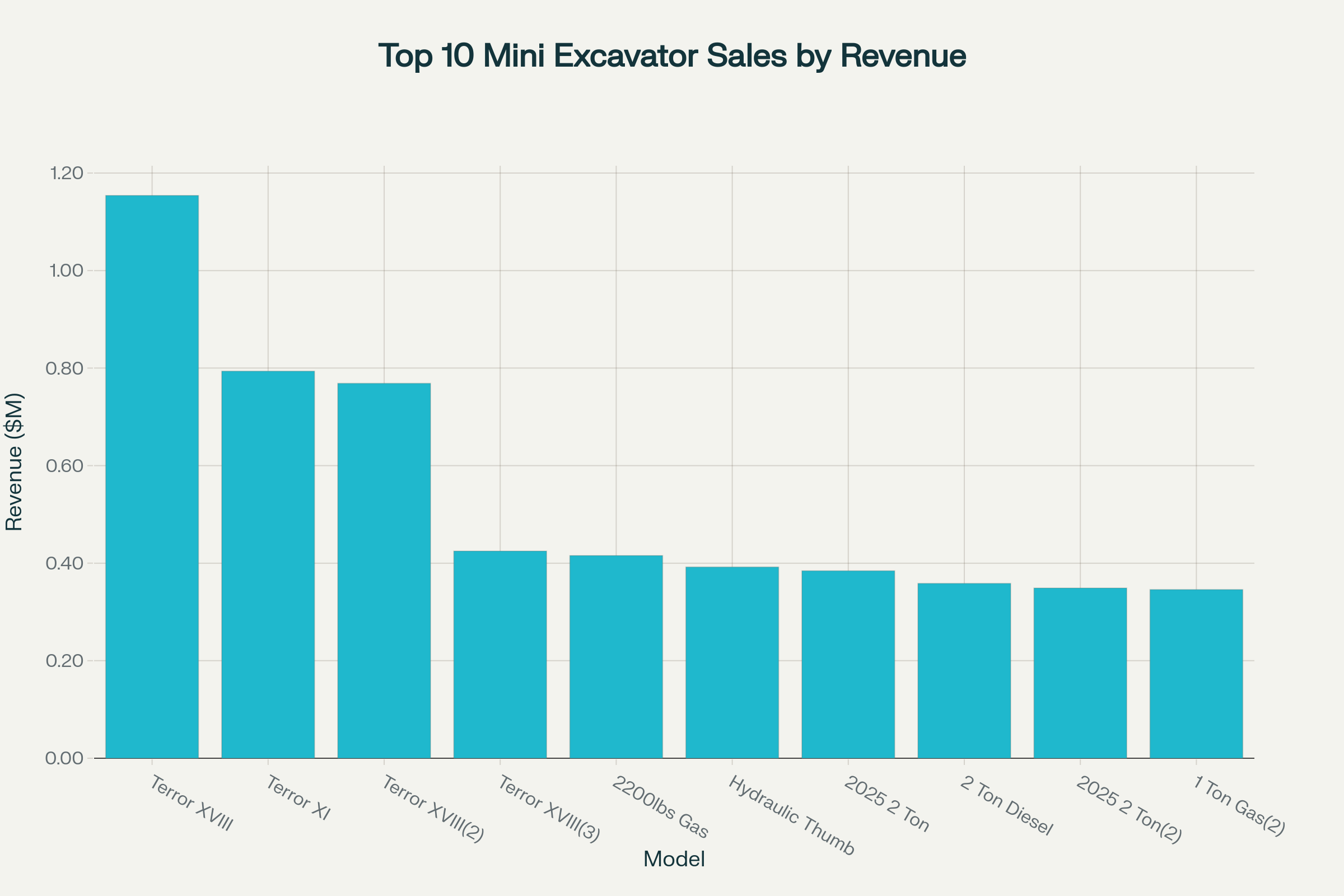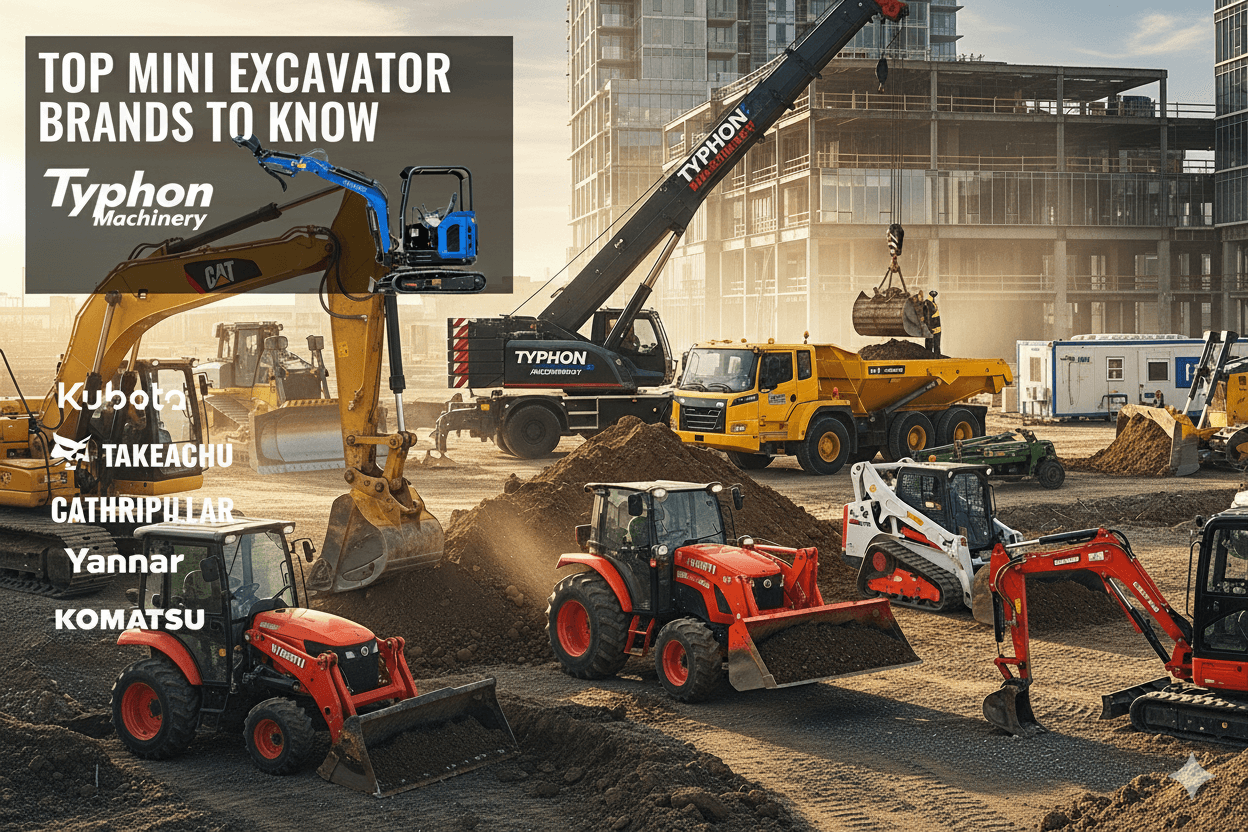Mini Excavators Guide: Mini excavators have become rather important tools in the field of building and beyond. These little powerhouses provide flexibility and efficiency in a small package, therefore changing how experts and do-it-yourselfers approach different projects. Knowing small excavators will open new opportunities, whether you’re leveling a backyard or negotiating a busy building site. Covering anything from their background to future developments, this book reveals the secrets of mastering mini excavators.
A Brief History of Mini Excavators
Though a modern wonder, mini excavators have roots going back to the late 1960s. The need for adaptable, smaller machinery that could finish tasks that larger equipment couldn’t nimbly complete without sacrificing power drove their design. Fast forward to now, they are absolutely vital for building and do-it-yourself projects all around. They are vital because of their capacity to manage several activities and operate in confined areas. Mini excavators have become associated with efficiency from rural building sites to urban landscaping. As more businesses see their potential, their relevance keeps becoming more important.
Key Features of Mini Excavators
Leveraging the full possibilities of mini excavators depends on knowing their main characteristics. Their small scale is among the most important benefits since it lets them effectively negotiate limited areas that bigger machines cannot reach. Excellent lifting powers combined with this manoeuvrability help operators confidently handle different weights. Mini excavators sometimes also use sophisticated hydraulic systems that improve their performance and offer better power and control.
Modern mini excavators also have simple joysticks that assist both novice and experienced operators as well as easy-to-use controls often consisting of ergonomic seating options. Their adaptability—which spans hydraulic thumbs to augers—is improved by the availability of replaceable attachments, so they are suitable for a range of tasks including digging, trenching, and demolition. These features make compact excavators vitally necessary instruments in many different disciplines as they increase productivity and efficiency in every use.
Advantages of Using Mini Excavators
Using mini excavators in different projects has many significant benefits. Above all, their smaller weight and size help to make tight and limited regions more accessible, therefore allowing activities in places where bigger machines just cannot run. This agility greatly reduces project schedules and lets activities be finished more quickly.
Mini excavators are also less fuel-consuming than their larger counterparts, which helps both do-it-yourselfers and contractors choose them more affordably. As operators search for environmentally appropriate substitutes without sacrificing performance, this fuel economy fits the increased focus on sustainability within the building industry.
Mini excavators are also well-known for their mobility. Often removing the need for big trailers or specialized transport equipment, their small size allows easier movement to and from job locations. This portability allows tools to be carried straight to the current work, therefore reducing downtime and optimizing output.
Mini excavators are unique in their capacity to satisfy a wide range of project requirements because of their adaptability and range of attachments, which enable them to flow between jobs—such as digging, grading, or lifting. In the end, their strategic benefits highlight the reason tiny excavators have grown to be indispensable instruments for contemporary building and landscaping projects.
Types and Sizes of Mini Excavators
Designed for varied jobs and terrain, mini excavators come in several shapes and sizes. Usually, their weight and digging depth define these devices. A small mini excavator under three tons is perfect for mild gardening; larger machines, ranging from three to ten tons, fit more demanding building projects.
Furthermore, influencing the size choice is the nature of the job site. For example, whereas rural projects gain from larger models with expanded reach and lifting capability, urban projects call for smaller machines to negotiate limited areas. Knowing these variances helps you choose the correct instrument for the task.
Selecting the Right Mini Excavator for Your Project
Achieving the best outcomes in your particular project depends on selecting the suitable mini excavator. Start by determining the extent and type of current work. For jobs requiring a lot of digging or hard lifting, a more sturdy model with increased lifting capacity could be needed. On jobs needing accuracy in confined areas, on the other hand, a smaller, more portable excavator is better.
Think also of the ground and topography the excavator will work on. While rocky or mountainous circumstances may benefit from an excavator with more power and digging depth, soft, uneven ground might call for a machine with wider tracks to disperse weight and prevent sinking. Also know the accessories you need for your particular jobs. From excavation to demolition, options such as buckets, breakers, or tilt-rotators help to improve adaptability and efficiency, thereby enabling a smooth transition to many jobs.
At last, be sure you consider operator comfort and control aspects. Advanced models with ergonomic seats, changeable controls, and high-visibility cabs will not only improve output but also guarantee safer running. Equipped with the knowledge to choose the appropriate little excavator, you will surely open the path for effective project completion and remarkable outcomes.
Maintenance and Care for Mini Excavators
Mini excavators’ lifetime and best performance depend on correct maintenance and care. Important components, including hydraulic fluid levels, track tension, and engine performance, should be checked by routine inspections. While planned lubrication of moving components saves wear and tear, therefore adding to the general dependability of the machine; regular cleaning of the filters and radiators is essential to prevent overheating and maintain efficiency.
Furthermore, it’s crucial to create a maintenance program in line with manufacturer guidelines, which can call for repairing hydraulic hoses and worn items, including undercarriage components. Maintaining a thorough record of maintenance actions not only facilitates performance tracking but also helps to spot possible problems before they become more major ones. By carefully keeping mini excavators, operators may extend their operational lifetime and guarantee they remain trustworthy assets able to efficiently satisfy the needs of different projects.
In the end, adopting a proactive attitude to maintenance shows a dedication to quality, optimizing the investment in small excavators and confirming their indispensible use in the landscaping and building sectors.
Operating a Mini Excavator: A Beginner’s Guide
Although running a mini excavator can be intimidating, anyone can learn this ability with proper direction. First, acquaint yourself with the controls—joysticks for movement and levers for the boom and bucket. Safety comes first; so, always follow manufacturer directions and don protective gear.
Perform a comprehensive pre-operation check looking at fluid levels, tire pressure, and attachments before running the engine. Once you’re ready, hone soft moves in a free space. As you grow more confident, progressively complicate matters. You will get good at jobs including excavating, hoisting, and trenching with time.
Essential Maintenance Tips for Mini Excavators
The lifetime of any machinery is mostly dependent on maintenance; mini excavators are no exception. Maintenance done regularly guarantees best performance and helps to avoid expensive failures. Start with standard inspections, concentrating on the hydraulic system, tracks, and attachments.
Especially following dusty or muddy jobs, cleaning is absolutely vital to prevent wear and blockage. Check fluid levels always; replace filters as necessary. Oil moving components to lower friction and increase lifetime. Keep a maintenance log last to record service and repair dates. Following these guidelines will help your mini excavator remain in top performance, ready for any task.
Maintenance Tips for Mini Excavator Owners
Maintaining the dependability of a mini excavator depends on regular maintenance for owners of such machines. Above all, always consult the manufacturer’s handbook for particular maintenance intervals catered to your model since it will help you to plan frequent inspections and checks.
Apart from the regular schedule, pay great attention to attentively observing the hydraulic system since any performance anomalies could point to leaks or pressure problems. Regular inspections of hoses and connections help to find evidence of wear or damage. Furthermore, after every usage, cleaning the undercarriage and tracks not only helps to avoid the buildup of dirt and trash but also facilitates improved mobility and performance in next activities.
Track fluid levels aggressively to guarantee that the engine oil, hydraulic fluid, coolant, and other fluids are kept at ideal conditions. Longevity and efficiency depend on routinely replacing the oil and filters in line with the timetable. Moreover, consider the state of the bucket and other attachments; strong blades and durable parts not only improve performance but also help the machine to run free.
Finally, appreciate the need of operator education. By means of training for yourself or your operators, you can improve the handling of the machinery, therefore reducing the possibility of mishaps or misuse that would result in unnecessary damage. Mini excavator owners may protect their investment and guarantee the equipment runs faultless for years to come by giving these maintenance techniques top priority.
Maintenance Requirements for Mini Excavators
Following thorough maintenance guidelines is crucial to guaranteeing the best performance and lifetime of small excavators. Key maintenance chores listed here in bullet points for clarity are:
- Daily Inspections:
- Check hydraulic fluid levels and top up if necessary.
- Inspect tracks for any signs of damage or wear.
- Ensure all safety features are operational.
- Weekly Maintenance:
- Clean filters (air, hydraulic, and fuel) to prevent clogs.
- Examine hoses and fittings for leaks or signs of wear.
- Inspect and clean the undercarriage and tracks.
- Monthly Maintenance:
- Change engine oil and replace oil filters.
- Check and replace fuel filters if required.
- Inspect the condition of the bucket and other attachments.
- Quarterly Maintenance:
- Conduct a thorough inspection of the hydraulic system.
- Lubricate all moving parts, focusing on pivot points and joints.
- Review and tighten any loose bolts or fasteners.
- Annual Maintenance:
- Perform a complete inspection of the electrical system.
- Replace hydraulic hoses and connections as per wear indicators.
- Review the manufacturer’s guidelines for specific annual service recommendations.
Keeping a disciplined attitude to these needs not only increases the operational lifetime of your mini excavator but also helps to reduce the chances of unplanned breakdowns and expensive repairs. Being proactive in your maintenance guarantees that your equipment stays a dependable and effective tool in your endeavors.
Maintenance and Operational Tips for Mini Excavators
Mini excavators’ lifetime and efficiency depend on both operational best practices and maintenance being included into everyday activities. Operators should first and most importantly keep the excavator’s working surroundings clean. Frequent cleaning of the equipment from trash and mud lowers the danger of damage and guarantees flawless running. Operators should take pre-operation checks, which should verify that all controls are functional and that safety systems are in place, very seriously.
Regarding operating methods, purposeful and fluid motions are absolutely critical. Fast, jerky motions can strain the equipment too much and cause mechanical breakdown. To prevent possible hazards that can cause mishaps, operators also need to be mindful of their surroundings. Moreover, using the full range of motion of the machine helps performance; correct digging and lifting methods will greatly increase output and lower equipment wear.
At last, it is vital to keep updated on any manufacturer changes in operational methods or maintenance schedules. This proactive approach guarantees not only adherence to safety criteria but also promotes an equipment management excellence culture. Mini excavators operators can improve the dependability and performance of their machinery by including this maintenance and operational advice, therefore producing better project results.
The Great Debate: Renting vs. Buying Mini Excavators
Choosing between renting and buying a mini excavator is a regular conundrum. Each choice has different benefits. Renting removes storage and maintenance hassles, gives flexibility for temporary projects. If you use it seldom, it’s reasonably cheap. Conversely, for those with ongoing projects that provide long-term savings, owning a tiny excavator fits.
Before deciding, give rental expenses, equipment availability, and length of your project some thought. Review your needs and budget closely. Renting provides ease; ownership gives control and availability anytime you need it.
Comparison Table: Renting vs. Buying Mini Excavators
| Feature | Renting | Buying |
| Initial Cost | Low upfront costs; rental fees apply | Higher initial investment |
| Maintenance | Typically covered by rental company | Owner responsible for maintenance |
| Usage Flexibility | Ideal for short-term or occasional projects | Best for long-term and frequent use |
| Storage | No need for storage; return when done | Requires storage space when not in use |
| Equipment Availability | Limited to rental company’s inventory | Full control over the machine and its availability |
| Depreciation | No depreciation concerns | Subject to depreciation over time |
| Customization | Usually no ability to customise | Freedom to outfit with specific attachments |
| Insurance | Covered in rental agreement | Owner must arrange and maintain insurance |
| Financial Commitment | No long-term financial commitment | Long-term investment required |
| Tax Implications | Rental fees may be tax-deductible | Ownership may provide depreciation benefits |
This table shows the main variations between renting and buying mini excavators, thereby helping stakeholders to decide depending on their project requirements and financial situation. Aligning equipment decisions with general operating strategy depends on an awareness of these elements.
Safety Considerations for Mini Excavator Operation
Safety has to be the first concern while running mini excavators to guard workers as well as tools. Wearing suitable personal protection equipment (PPE), such as hard hats, safety glasses, gloves, and steel-toed boots, operators should first A comprehensive pre-operation safety check is also absolutely essential to make sure all safety devices—including alarms, lights, and seat belts—are operating as they should.
Before starting operations, operators have to evaluate for overhead and underground risks, including electrical lines and utility placements; awareness of the working environment is therefore quite important. Using hand signals or radios, team members should create a clear communication plan to guarantee everyone is informed of movements and possible hazards.
Moreover, one cannot stress the value of appropriate operator certification and training. Only qualified individuals who are aware of the machine’s capabilities and operational limits should operate the small excavator. Maintaining a safe distance from the swing radius of the excavator and keeping the work area free of extraneous workers is equally vital. These factors help to create a secure culture that guards priceless assets and lowers the possibility of mishaps on the site.
Safety Measures During Mini Excavator Operation
Maintaining personnel’s safety and improving operational efficiency depend on strong safety precautions applied throughout mini excavator operation. Operators should make sure the whole team understands all safety equipment before starting work. They should also be not simply functional. This covers a thorough walk-around check to verify that the machine is fault free and that fluid levels are sufficient.
First and most importantly is establishing a clear zone of operation; this entails erecting barriers to prevent illegal workers from being near the swing radius and worksite. Furthermore, highly defined are communication procedures; hand gestures and two-way radios help to greatly minimize misinterpretation in a noisy workplace. Following set excavation procedures will help operators avoid unintentional hits on subterranean utilities by guiding safe digging techniques.
Furthermore, non-negotiable are instructions and refreshers on emergency operations. Every operator should be highly skilled in quickly and precisely handling equipment breakdowns or hazardous scenarios. Frequent safety drills guarantee that every team member can act fast in case of an emergency and help to strengthen this knowledge. Using these all-encompassing safety precautions not only safeguards the workers but also maximizes equipment performance, therefore promoting a culture of accountability and excellence on site.
Common Mini Excavator Attachments
Mini excavators provide flexibility that can be greatly improved by using different attachments meant for particular jobs. Maximizing equipment performance and guaranteeing project efficiency depend on a knowledge of these attachments.
- Buckets are the most common attachment. They come in a variety of sizes and shapes, including standard, narrow, and tilt buckets. Standard buckets are ideal for general digging and excavation, whereas narrow buckets provide precision for trenching and working in tight spaces. Tilt buckets make it easier to grade and level surfaces.
- Hydraulic Hammer: This attachment is intended for breaking concrete, asphalt, and rocks. Its powerful percussive action helps with demolition and trenching by breaking through hard materials quickly and efficiently.
- Auger: Augers are a go-to attachment for jobs involving ground drilling. Their different diameters can make holes for utility installations, fences, or planting. This attachment streamlines jobs that would otherwise be physically demanding.
- Grapple: The grapple attachment is essential for handling and transporting materials. With its claw-like design, it is particularly effective for grabbing large objects such as logs, rocks, or debris, making it invaluable in landscaping and site clean-up tasks.
- Ripper: rocky ground or hard soils are broken up with a ripper attachment. It is simpler to clear land or get ready for more excavation as one tooth of it pierves hard surfaces.
- Sweeper: Designed to tidy building sites, this attachment efficiently gathers trash, dirt, and waste, therefore maintaining the safety and orderliness of the workspaces.
Mini excavators operators can greatly increase the capacity of their machines by choosing the suitable attachments, therefore improving output and allowing the completion of a larger spectrum of tasks with more efficiency.
Comparison of Mini Excavators to Other Equipment
Particularly when compared to larger excavators or alternative equipment, mini excavators are a favored tool for many building and landscaping jobs. Their small size is one of their main benefits since it enables more maneuverability in constrained areas and metropolitan surroundings where access is restricted. Larger excavators, which may need a lot of space for operation and are frequently less flexible in confined conditions, contrast greatly with this agility.
Mini excavators also usually run with a lower weight and lower ground pressure, which makes them appropriate for sensitive jobs in soft or unstable surfaces where larger equipment could cause major damage. On the other hand, even while bigger excavators are great for heavy-duty jobs like deep excavation or major earthmoving projects, their size becomes a hindrance in areas where accuracy is crucial.
Mini excavators are better for trenching and utility work than skid steer loaders because of its articulated boom and higher range of motion, which increases digging capacity. Skid steers offer limited excavating capability even if they are more flexible for loading and pushing jobs. Moreover, because of their design and tracks, micro excavators usually provide higher stability during use—especially on uneven ground.
Mini excavators offer a great mix between power and fuel economy in terms of operational efficiency, which helps to typically result in reduced running expenses for small to medium-sized projects. Their flexibility with several attachments lets operators manage different jobs with only one machine. Therefore, even if bigger excavators and other tools have their uses in particular situations, the combination of agility, efficiency, and adaptability of the small excavator makes it a better choice for a wide spectrum of uses in contemporary building environments.
Environmental Benefits of Mini Excavators
Significant environmental benefits from mini excavators help to support more sustainable building methods. Their small operational footprint, which results from their compact design, reduces soil disturbance and lowers the possibility of erosion and habitat damage in sensitive areas. Especially in urban environments where maintaining local ecosystems is crucial, this cautious attitude to excavation is absolutely vital.
Mini excavators’ decreased weight also results in lower ground pressure, which lessens the possibility of damage to current surroundings. This is especially crucial in areas with delicate topography, including parks or private gardens. Moreover, the fuel economy of small excavators usually translates into smaller emissions than that of bigger gear, therefore improving the air quality and lowering the general carbon footprint of building operations.
Furthermore, the adaptability of mini excavators lets operators effectively do jobs without requiring several pieces of equipment, therefore reducing the visits to and from job sites. This consolidation not only improves output but also reduces traffic and related emissions, therefore encouraging a more ecologically friendly approach of building and landscaping projects. stressing these environmental advantages helps to underline the need of choosing the correct tools for the implementation of a project sustainably.
Cost Considerations for Mini Excavators
Cost factors are quite important in determining whether or not mini excavators should be used for landscaping or building projects. Mini excavators are first a reasonably affordable choice for small to medium-sized companies since their purchase price usually is less than that of bigger excavators. Still, it’s important to weigh the long-term expenses related to operation, maintenance, and attachment adaptability in addition to the initial outlay.
Mini excavators usually have running expenses, including fuel consumption, maintenance, and repair charges. Particularly for projects requiring long running times, their fuel-efficient engines offer a major economic benefit. Furthermore, compared to bigger, more complicated gear, the simplicity of maintenance for small excavators can lead to less downtime and fewer general maintenance expenditures.
Another cost consideration is the possibility of higher production by using different attachments. Mini excavators can cut the overall equipment needed on-site by allowing one machine to handle several jobs, therefore lowering rental or ownership expenses. Moreover, this flexibility can result in more effective project completion, hence reducing the general labor expenses connected with extended deadlines.
Ultimately, even while the running expenses and startup costs are rather important, it is equally vital to evaluate the possible return on investment (ROI) from using micro excavators. Their capacity to negotiate confined areas and complete complex jobs will greatly improve project results, thereby enabling more client satisfaction and repeat business possibilities.
Through thorough evaluation of these cost factors, companies can decide how best to include micro excavators into their operations, guaranteeing both financial feasibility and project success.
Maintenance and Longevity of Mini Excavators
Mini excavators have a variety of uses, so proper maintenance is essential to ensuring their longevity and best performance. Preventive inspections, fluid checks, filter changes, and regular servicing—all of which help to greatly lower the risk of unanticipated breakdowns and extend equipment life—can Following the manufacturer’s advised maintenance schedule helps operators to maintain the warranty of the machine in addition to guaranteeing dependability.
Furthermore, operators should concentrate on preserving the hydraulic systems, as their performance of the mini excavator depends on them. Two important parts of maintenance that can help to avoid expensive repairs are maintaining appropriate hydraulic fluid levels and tracking leaks. Routine examination is also necessary for the tracks and undercarriage; maintaining track tension will help to improve traction and stability, especially on uneven ground.
Furthermore, operating patterns of mini excavators significantly affect their lifetime. Mild operation lowers wear and tear, especially in delicate areas or while negotiating confined spaces. Not only does training operators maximize equipment life but also guarantees safe and efficient project execution. In the end, careful operation combined with regular maintenance will result in a strong return on investment, hence, mini excavators are a dependable tool for landscaping and building experts.
Cost of Ownership for Mini Excavators
Any company trying to maximize its operational budget has to first understand the cost of ownership for mini excavators. Not just the initial purchase price but also the continuous expenses connected to financing, depreciation, gasoline, maintenance, insurance, and possible repairs define the total cost of ownership (TCO). These elements together affect the economic feasibility of mini excavator purchases.
The total cost of ownership can be greatly influenced by financing choices; many businesses use lease agreements to help with upfront costs reduction. Still, it’s important to consider the long-term effects of financing decisions since periods and interest rates will ultimately determine overall expenses. Another important element is depreciation; mini excavators usually have a consistent rate of decline, which should be taken into account generally in financial planning, particularly with reference to resale value.
Often the most major continuous expenses are operational costs, including maintenance and fuel. Often showing better fuel economy, mini excavators save money over larger versions. Simplified maintenance schedules help companies reach a more consistent and smaller operating budget. Insurance expenses also have to be evaluated since the value, usage, and related dangers of the machine will affect the coverage degree.
Moreover, companies should take into account the possibility of higher profitability resulting from effective project management. Mini excavators allow faster completion times and the execution of a greater range of activities because of their adaptability and simplicity of use, therefore improving the bottom line. Through careful examination of all these elements, businesses can decide on the purchase and integration of mini excavators such that the lifetime expenses match their financial goals.
Comparison of Mini Excavators with Larger Excavators
Examining the efficiency and efficacy of small excavators requires a comparison with those of bigger excavators. Although their power and capacity make bigger excavators ideal for major ground-moving tasks, small excavators shine in agility and adaptability. Their small scale enables operating in limited areas where bigger machines would find difficult or impossible. In urban building sites, homes, and landscape jobs especially, this is helpful.
Mini excavators usually show better fuel efficiency, which over time helps to reduce running expenses. On the other hand, bigger excavators have more fuel and maintenance costs even if they have better lifting capacities and deeper digging capability. Mini excavators’ simplicity of maintenance adds even more attraction since they need less frequent repair than their larger counterparts, therefore improving operational uptime.
Mini excavators are also more easily available for small to midsized companies since their starting cost is typically far lower than that of bigger ones. Their capacity to complete a range of jobs using appropriate attachments reduces the requirement for several pieces of equipment on-site, therefore optimizing return on investment. In the end, although bigger excavators have benefits in some situations, micro excavators offer a sensible and affordable answer for many uses, therefore enabling every project to be carried out with accuracy and efficiency.
What Can You Do with a Mini Excavator?
A flexible powerhouse able to handle a variety of jobs across sectors, mini excavators are Thanks to attachments like augers and rippers, they shine in excavation of foundations, trenches, and footings in building. Using them for tilling ground, fencing installation, and big load movement, farming aficionados streamline their labor.
Professionals in landscaping value their accuracy in maintaining lawns, eliminating trash, and tree planting. Their lifting features make material handling a snap. From clearing snow to excavating utility lines, these vehicles provide great value for maintenance chores. Your imagination alone will restrict the opportunities.
How Much Does a Mini Excavator Weigh?
Choosing the correct model for your demand depends on knowing the weight of mini excavators. Usually weighing between two and ten tons, these devices use weight to effect their lifting capabilities and stability. For confined quarters and sensitive surfaces, lighter models under three tons are best. Between five and ten tons, heavier models provide more power for taxing chores. Think of the operator’s weight, attachments, and fuel included in the running weight. Matching the weight of the machine to the needs of the project guarantees effective and safe running.
How Much Can a Mini Excavator Lift?
The lifting capabilities of mini excavators have a significant impact on their adaptability. Though larger models can handle up to 10,000 pounds, they typically lift between 1,000 and 1,500 pounds. The hydraulic system, attachments, and counterweight are a few other factors that affect lifting capability.
Good counterweight design improves stability so the machine may raise more weight without tipping. Weight restrictions also affect attachments, including buckets and grapples. Think also on ground conditions; stable ground helps higher lifting capacity. Consult manufacturer specifications always to guarantee effective and safe lifting operations.
Case Studies: Real-Life Success with Mini Excavators
Case studies show small excavators’ practical influence. A small-scale housing project using mini excavators effectively excavated tight areas in urban buildings, therefore lowering labor costs and project times. Using mini excavators for cattle maintenance and soil preparation changed the way a farming cooperative worked, increasing profitability and output.
Concurrent with this, a landscaping company improved its offerings by including small excavators for complex garden designs, therefore attracting customers and returning business. These illustrations show how mini excavators maximize several uses, therefore justifying their value in projects of various kinds and scopes.
Future Trends in Mini Excavator Technology
Mini excavator technology seems to have interesting developments ahead. Emerging as revolutionary are telematics and automation, which improve accuracy and lower operator tiredness. Remote-operated small excavators keep operators safe by allowing jobs in dangerous settings. Reducing emissions and matching with sustainability objectives, electric and hybrid cars are becoming popular.
Integration of artificial intelligence also provides predictive maintenance, hence reducing downtime and prolonging equipment lifetime. These patterns point to a change toward better, more environmentally friendly building techniques. Mini excavators will keep changing sectors as technology develops and offering creative answers for contemporary problems.
Conclusion
Mini excavators are flexible and strong tools for gardening, farming, and building. From digging and lifting to exact landscaping work, their small size and versatility make them handy for a great variety of chores. Professionals and fans can both realize their full potential by knowing the subtleties of mini excavators, from selecting the appropriate size to perfect operation.
Unquestionably, whether you choose to rent or own will help you in terms of production and efficiency. Discover the possibilities of small excavators to improve your projects to unprecedented standards. See TYPHON Machinery now for individualised advice and to investigate our selection of small excavators.

